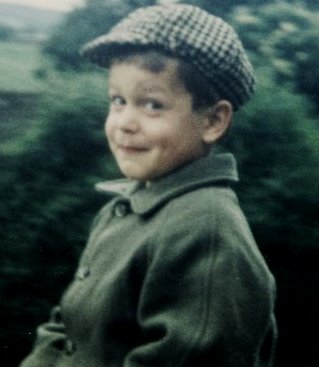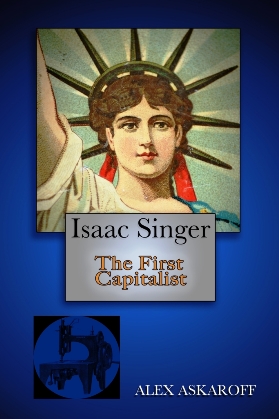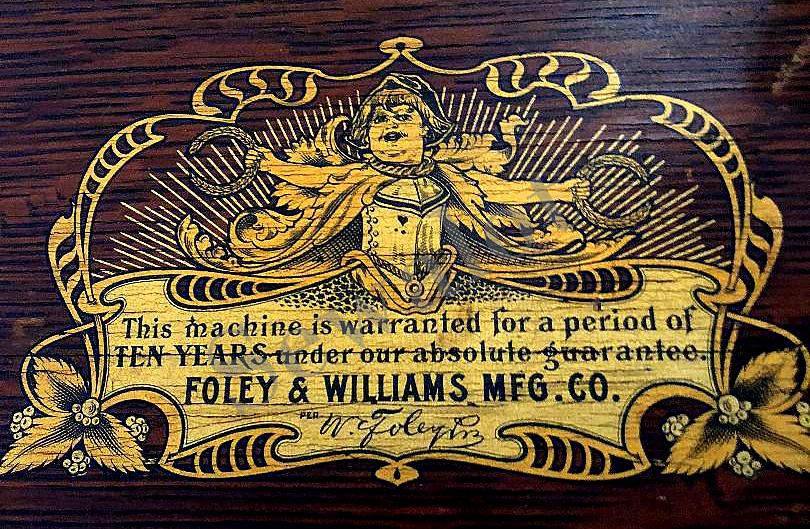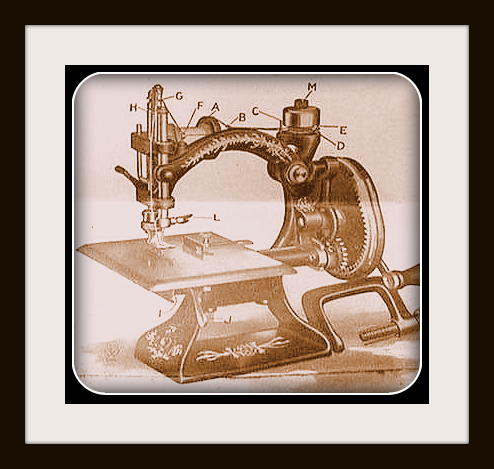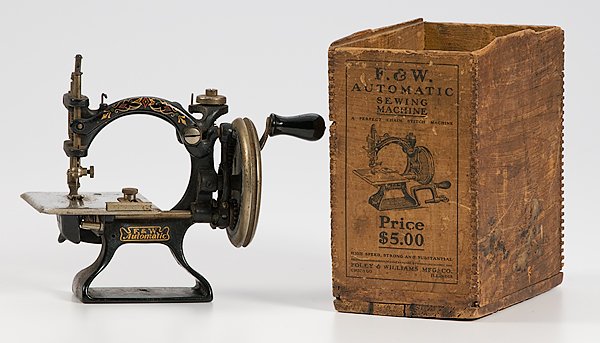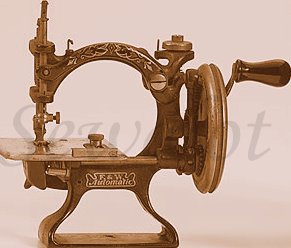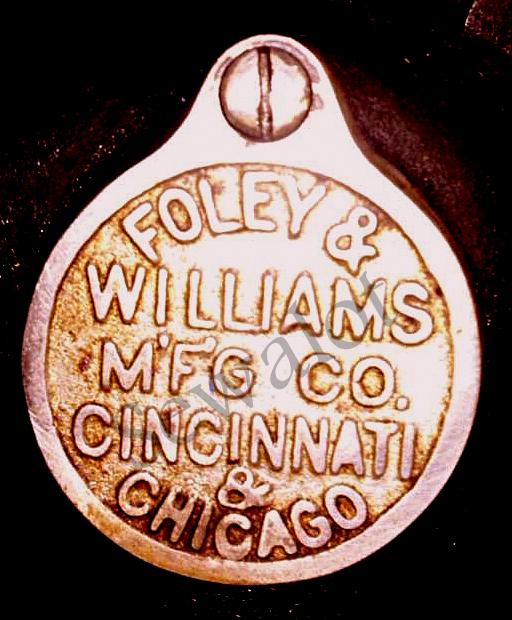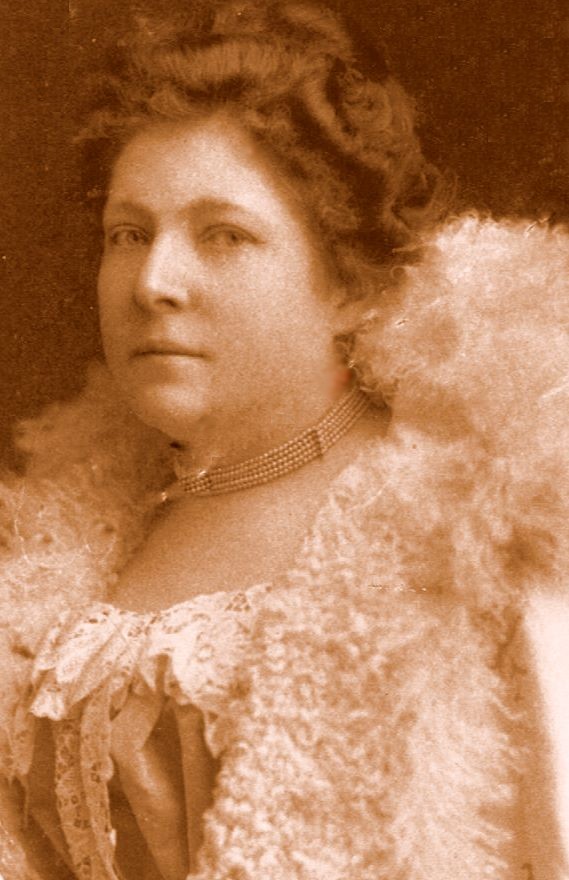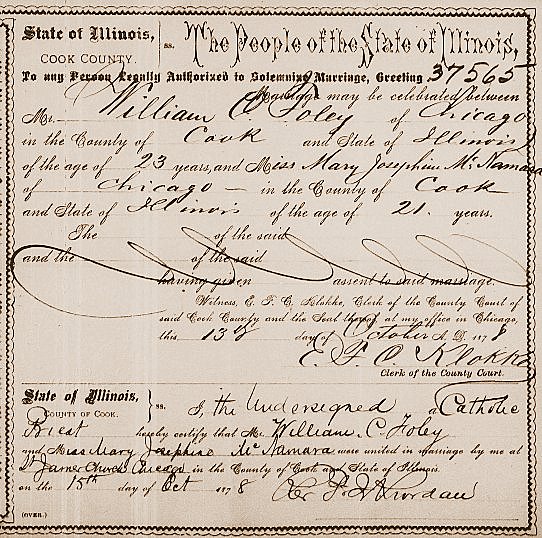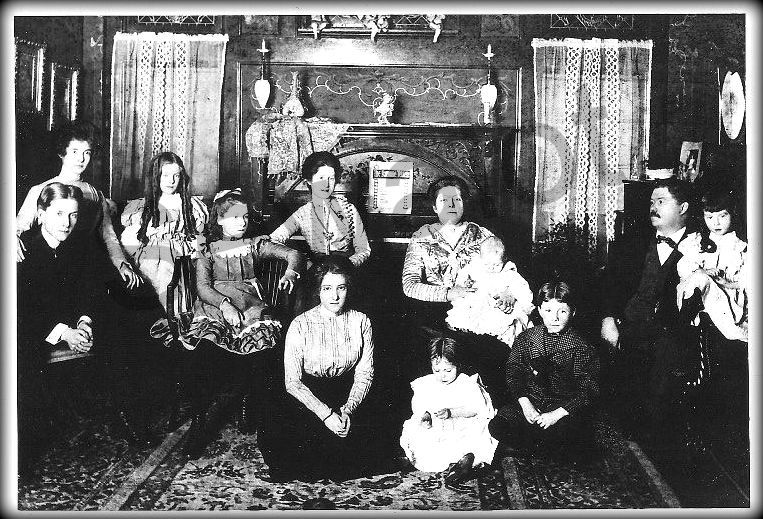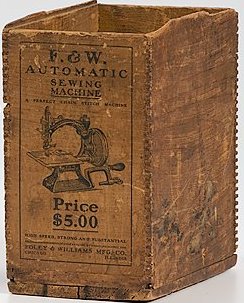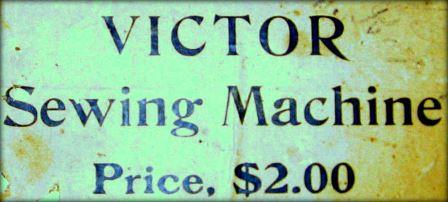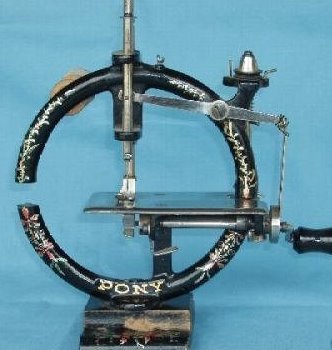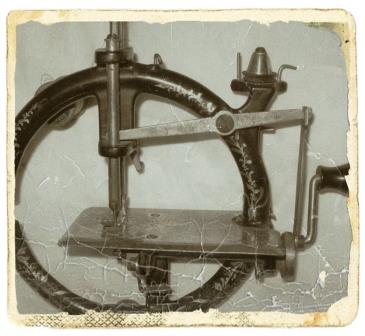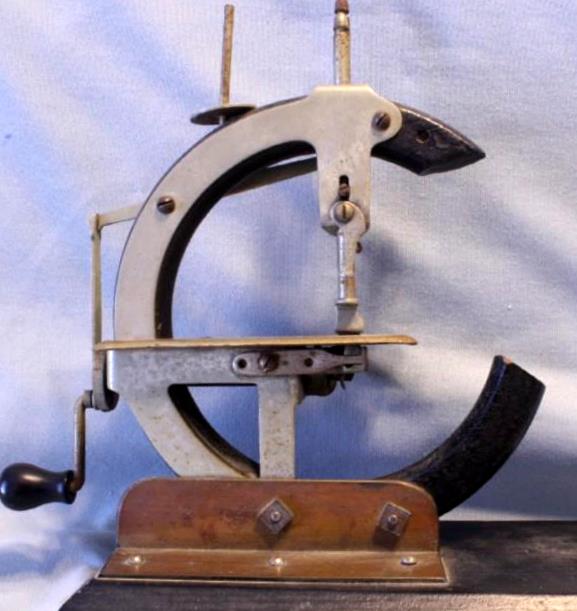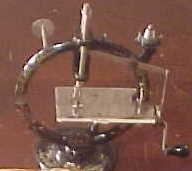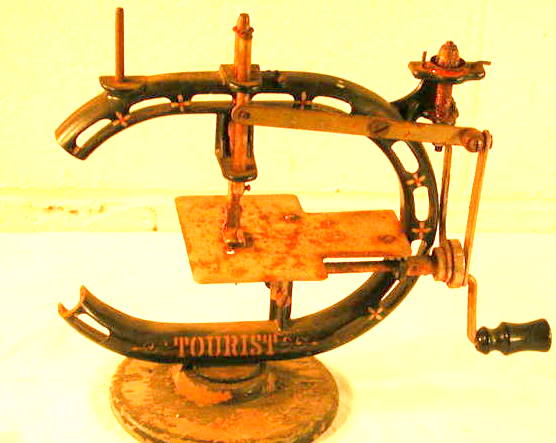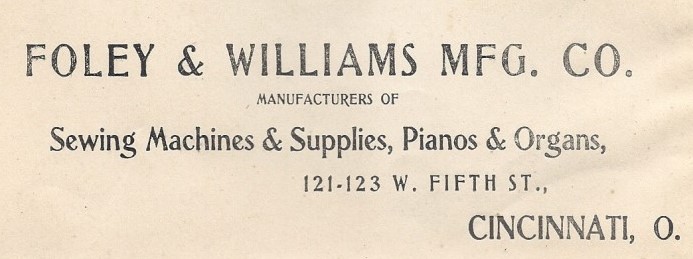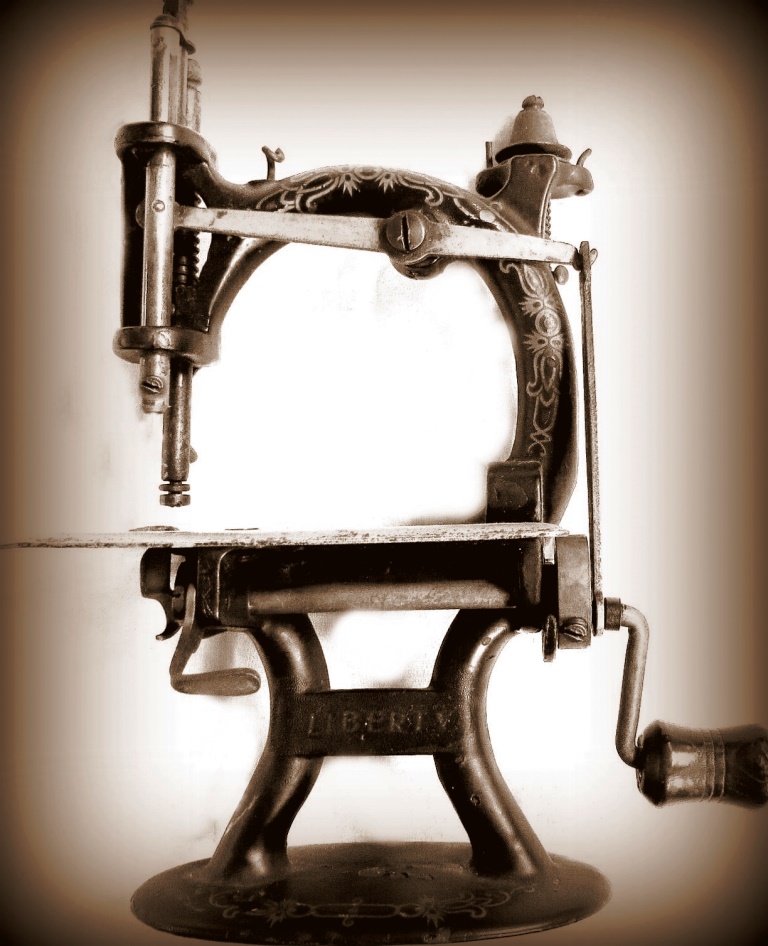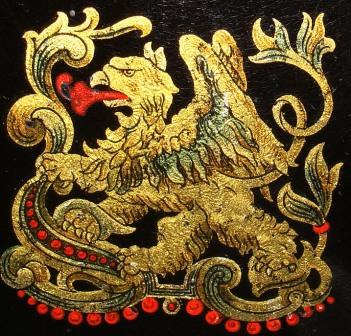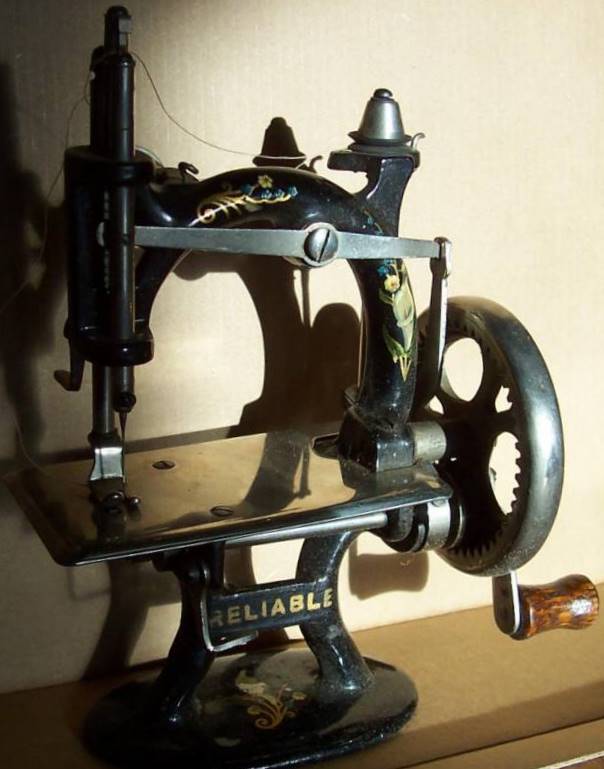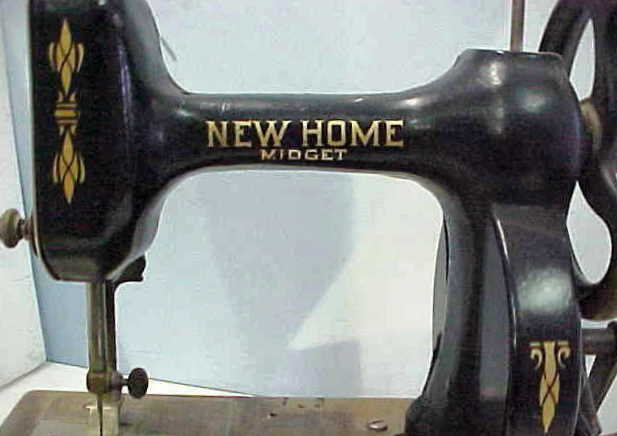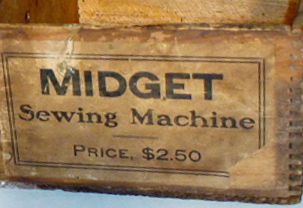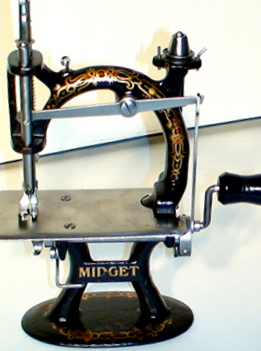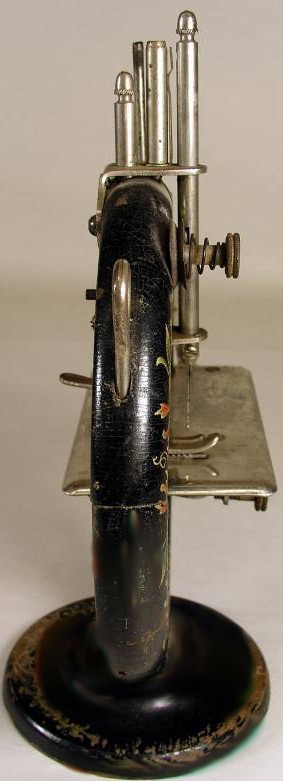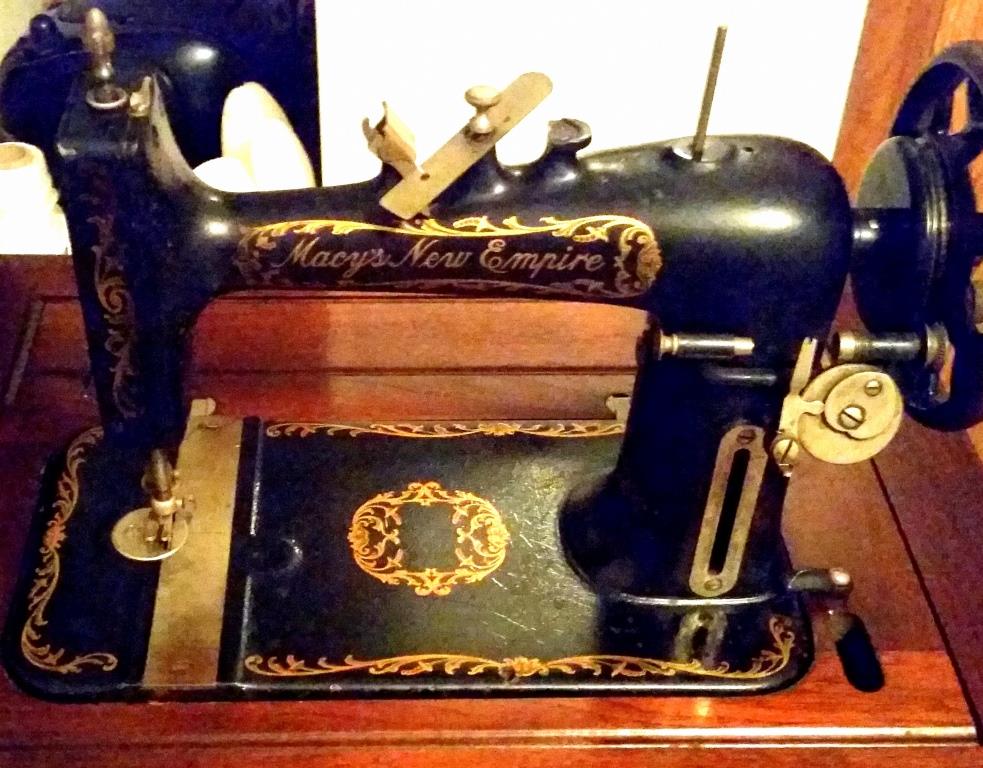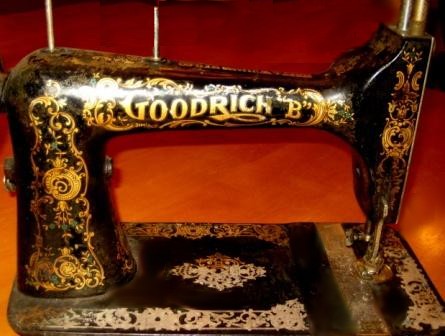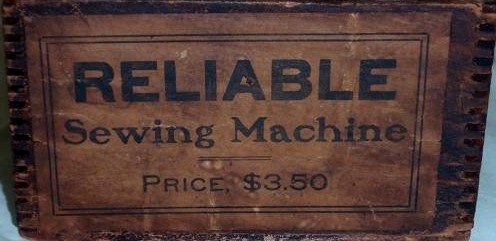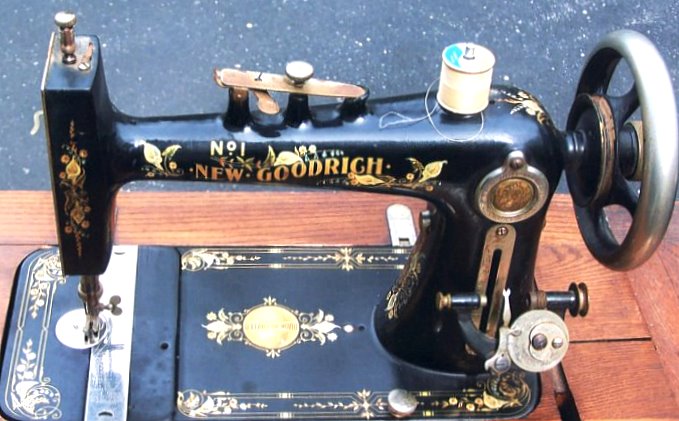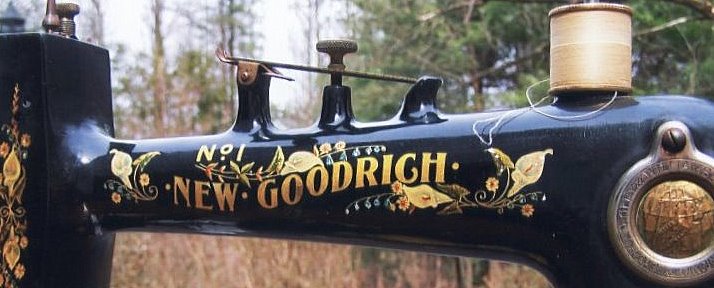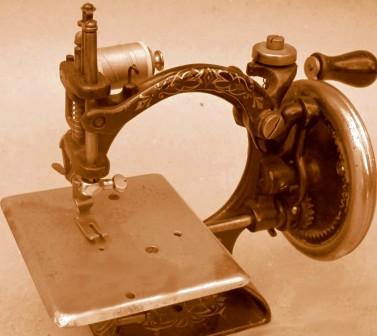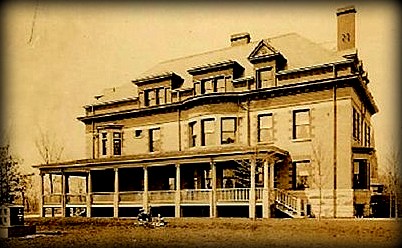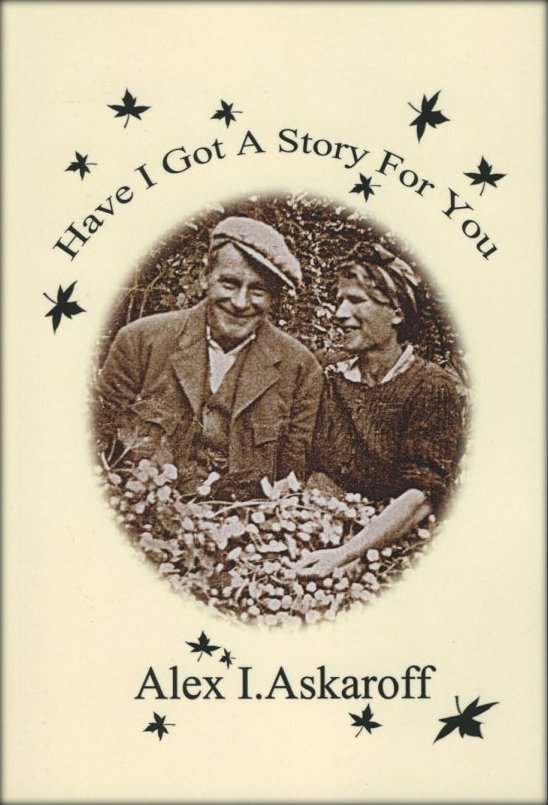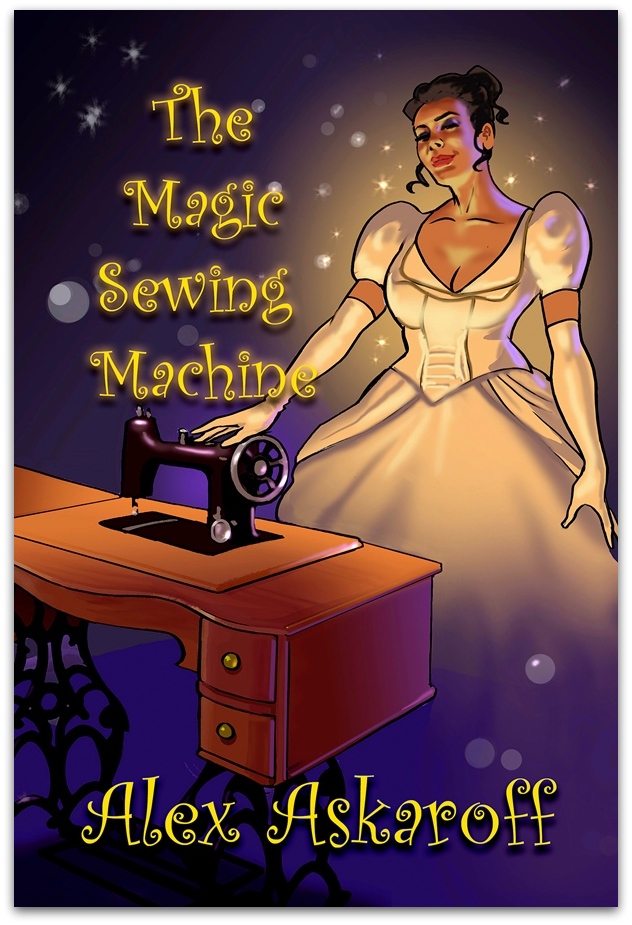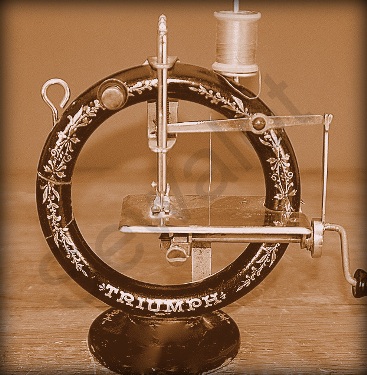|
||||
|
|
Alex I Askaroff
Alex has spent a lifetime in the sewing industry and is considered one of the foremost experts of pioneering machines and their inventors. He has written extensively for trade magazines, radio, television, books and publications worldwide. Alex has had Seven No1 New Release on Amazon and two dozen books published worldwide.
Over the last two decades Alex has been painstakingly building this website to encourage other collectors and enthusiasts around around the Globe.
Books by Alex Askaroff
Most of us know the name Singer but few are aware of
his amazing life story, his rags to riches journey from a little runaway
to one of the richest men of his age. The story of Isaac Merritt Singer
will blow your mind, his wives and lovers his castles and palaces all
built on the back of one of the greatest inventions of the 19th century.
For the first time the most complete story of a forgotten giant is
brought to you by Alex Askaroff. See a day in the life of a travelling sewing machine engineer, Alex Askaroff on YouTube
|
|||
|
The Foley and Williams
Manufacturing Company
Researching the toy or small Foley & Williams sewing machines has been incredibly frustrating. After years of digging I still haven't all the information about a company that was around for decades and made some of the most spectacular small sewing machines in history. I have put everything that I have learnt onto this page in the hope that someone will take the flag forward and complete my work. It will be well worth the effort.
William Foley
tribute William Foley, one of our finest and most respected businessmen, was a fine fisherman and hunter. He exhibited, brightness, aptitude, patience and indomitable perseverance with a cheerful and sanguine temperament from an early age, coming to Chicago as a youth of 16 to seek his fortune. William Foley brought business and prosperity to our town and deservedly resided in one of the finest residents in Chicago at Grand Boulevard and Forty-sixth Place which he furnished lavishly with statues and fine works of art. So what do we know about Foley & Williams, the company, and the men who built the machines? William C Foley was the son of Thomas & Bridget Foley both immigrants from County Cork in Southern Ireland. Thomas Foley Snr was born in 1803 in Mount Uniacke, Cork. He was a carpenter by trade and moved to America during the Potato famine in Ireland which had caused mass starvation and disease in Ireland. Thomas Foley Snr died 13 October 1882. His wife, Bridget Foley, Nee Mc Grath, was born in Castlemartyr in Cork in 1820. She died 27 October 1894 in Hamilton. There was a terrible tragedy in the Foley family in 1856 when Thomas and Bridget lost three of their family at sea, Denis Foley 13, John Foley 11, and Thomas Foley who was just 9. The family are all mentioned on Thomas & Bridget's grave at Hamilton cemetery. Now let us get back to happier events with William Foley. William C Foley was born on 2 June 1854 in Ontario, Canada. William moved to Chicago at the age of 16 to seek his fortune. There is a connection with E P Johnson who possibly established the original piano company around 1870 in Chicago that later became Foley & Williams. He may have also established the E P Johnson Piano Co in Illinois and Ottawa. Both companies were dissolved around 1930 during the Wall Street Crash when thousands of companies went to the wall. They made high quality Pianos (Northwestern brand), reed organs (Pipe-Tone and Peerless brand), bicycles, phonographs (Wondertone brand) and best of all for us, sewing machines. After a period William Foley went to work in the offices of H B Goodrich wholesale dealer in Remington, Estey and Goodrich Sewing Machines. They were also engineering jobbers making all kinds of parts for sewing machines and other devices. To make things more confusing Goodrich, along with their attachments manufacturing, may have originally only supplied machines from another source and made parts, not manufacturing the bigger sewing machines till later. I will explain more about in a mo. Anyway here William Foley moved up step-by-step through the company. In 1879 William Foley was in Cincinnati working at a new branch of the company when he was offered a partnership in Goodrich (a year after his wealthy marriage).
In 1880 the Foley & Williams Sewing Machine Co was formed and by 1882 Foley & Williams had bought out the giant Goodrich Company Cincinnati branch and formed his own company with his new partner Williams. Foley & Williams are intertwined with Goodrich sewing machines as I will try and explain later. By the early 1880's Goodrich's, run by Herman Barnum Goodrich, was the largest manufacturers of sewing machine attachments in the world. With their main salesroom at 70-72 Adams Street, Chicago.
But letís look just at Foley & Williams sewing machines. The main address that I have for Foley & Williams is 121 to 123 Fifth Street, and West Sixth Street, Cincinnati, Ohio. Hang on there is another address later...
I know the Midget, Reliable, Victor and Pony sewing machines came from 46 East Jackson Boulevard, Chicago, Illinois. Was this a manufacturing plant or main showroom?
Foley & Williams I know their later, Empire Sewing Machine, had a metal badge on the body saying... Foley & Williams Mfg. Co. Cincinnati & Chicago. Now, there is a possibility that Foley & Williams did not make 100% of their sewing machines until they acquired the Goodrich sewing machine business Cincinnati Branch in 1882. With this acquisition they had everything that they needed to complete sewing machines from start to finish.
Foley & Williams
sewing machine attachments Originally W C Foley was employed at the Goodrich sewing machine business and he teamed up with D W Williams in order to purchase the Goodrich company. By 1883 William Foley had succeeded in also purchasing the main Goodrich Chicago Branch. Foley moved to Chicago and Williams stayed in Cincinnati to run that branch. How they came into the enormous wealth so quickly need explaining as things don't add up here. Somehow Foley went from a dogsbody at Goodrich to owning his own, and the the Goodrich Company! How?...A lot of money came from somewhere and suddenly. From my research it is most likely to have come from a marriage. A wealthy marriage William Foley seemed to come into a large amount of money and financial help and was able to make the huge leap from employee to business entrepreneur and owner. It is quite possible this sudden wealth came from William's marriage into the substantial McNamara family.
William Foley married Mary Josephine
McNamara, daughter of Patrick McNamara and Mary Brazell. Patrick
McNamara was originally from Ireland and a
self made man.
The couple married in Chicago in 1878. They had 10 children including Hazel Foley and Florence Foley.With the marriage William possibly came into enough wealth to follow his dream.
Now things move on a pace. From 1882 & 1883 the Goodrich Sewing Machine Company became Foley & Williams. However it's not that simple for a few years later after William Foley bit the dust Williams decided to revert back to the Goodrich name. I'll explain later. Got a headache yet? William & Mary Foley William Foley is seen here seated proudly on the right with Mary now with ten children. The poor girl must have been exhausted! Hazel & Florence Foley are the only two children's names I have so far uncovered. They were always told not to smile in the pictures as they could not hold the smile during the long exposure, leading to blurred pictures. That is one of the reason no one seems to smile in old photos. Many thanks to Christine Poindexter for this excellent family photo. See a day in the life of a sewing machine engineer, Alex Askaroff on Youtube The perfect chain stitch machine, small but substantial
Foley & Williams branched into small sewing machines as well as the normal Goodrich large-range at this time. William Foley also bought up other patents to do with sewing machines such as the Nicholas A Hull sewing machine tabletop patent. Foley & Williams stocked and supplied throughout Australia
The Foley and Williams Manufacturing Company working out of the old Goodrich Sewing Machine Company sites ran their premises at Cincinnati, Ohio from 1882 to 1926. When the company peeked they were manufacturing over 1,000,000 dollars of machines a year. However William Foley also invested heavily in real estate around Chicago. 1867-1882: H. B. Goodrich, Chicago, Illinois
The model 29 or Goodrich B was advertised as the best selling sewing
machine that they had ever placed on the market. No big boast if the
other machines were poor! Only kidding.
Foley & Williams produced a range of toy sized sewing machines like the... Yankee sewing machine Practical sewing machine Triumph sewing machine Victor sewing machine Pony sewing machine Reliable sewing machine Midget sewing machine Liberty sewing machine Tourist sewing machine The Tourist sewing machine was an oval cast iron machine, some of the other were in wood and circular like the Triumph, Victor and Pony. And to make things even more confusing F&W were also agents for other companies such as Remington and Springfield. Foley & Williams, 46 Jackson Boulevard, Chicago. Several of the Foley & Williams toys were very similar. For example the Midget, Gem and Liberty look similar. The only difference with the Gem was the lack of automatic tension which was a real drawback. I can only assume it was even cheaper than the $2.50 Midget.
The Foley &Williams Reliable is almost the same as well but with a complete hand-wheel (rather than cam-handle) that allowed three stitches for each revolution rather than one.
The most expensive of the toy machines was the Foley & Williams $5 Automatic which managed four stitches per revolution.
In 1905 the Reliable and Foley & Williams Automatic were sold through the Montgomery Ward Catalogues and sold well enough to be included up until 1908. It was advertised as a portable machine ideal for travelling and Practical and light, perfect for the ladies! Superior to any sewing machine ever offered at this price. Probably true, they were little diamonds. Sear's & Roebuck also stock the machines.
The machines were often sold and sometimes given away. If you could get enough subscribers to a periodical of the day like Casinoís Little Folks you would get a sewing machine for free. This was a similar strategy used by several companies the best known being the Beckwith Sewing Machine Co. Liberty $2.50 Midget $2.50 Reliable $3.50 F&W Victor $2.00 F&W Pony $2.50 F & W Automatic $5.00 Several of the Foley & Williams machines with automatic tensioner have a similar mechanism to the Willcox & Gibbs machines just smaller and interestingly take the same Willcox & Gibbs needle with special grooved needle bar shaft. I have some Willcox & Gibbs needles. Mail me: alexsussex@aol.com The most successful F & W model was the Foley & Williams $5 Automatic which ran for 20 years from around 1890 to 1910. The Foley & Williams portable machine ,ideal for travelling. Practical and light, perfect for the ladies! Superior to any sewing machine ever offered at this price
I spotted the Midget on Ebay and grabbed it against stiff opposition. It sews like a dream using Willcox & Gibbs needles. Back to the Goodrich sewing machines. Sears & Roebuck, one of North Americaís most successful supplier of sewing machines featured Goodrich sewing machines in their 1893 catalogue. In 1894 they sold the Goodrich Mercury Sewing Machine. Goodrich sewing machines had an early connection to a company called June Sewing Machines which were the Standard Sewing Machine Company of Chicago. Apparently Goodrich got some of their complete early machines from these/this company. Wooden sewing machine
In 1881 Singers were taking them to court for trademark infringement. The Standard & June sewing machines were clearly marked as Singers and Improved Singers. How crazy is that! To copy the biggest manufacturer in the world who just loved taking competitors to court. Needless to say Singers won. So far all this is as clear as mud but I shall struggle on.
Back to Foley & Williams. As far as I can find out, originally, the Foley & Williams Manufacturing Company had two manufacturing bases one in Chicago and one in Kankakee. It is possible that one factory made the toys, or small models, and one factory the full size main-stream models like the Empire Sewing Machine and later the Goodrich model B, below. Foley & Williams Goodrich Model B circa 1890
Kankakee is a city in Kankakee, Illinois, once home to the Potawatomi Indians. The Kankakee River, part of the upper Illinois River was perfect to transport goods to and from the factory.
Goodrich B sewing machine In 1896 the full sized Improved New Goodrich sewing machine or their No2 model sold for $26.50 a princely sum of around eight weeks wages. The Improved Goodrich Sewing Machine was also sold as the New Treasure Sewing Machine and was guaranteed by Foley & Williams for 10 years. One of the retailers for Foley & Williams and Goodrich sewing machines was W C McKenzie & Co of Piedmont, South Carolina.
The New Goodrich
In 1917 W C Foley died and in 1926 the Foley & Williams went bust and were reorganised solely as the Goodrich Sewing Machines Co. So that is where we will end of our little journey. Apparently the Goodrich Sewing Machine Co still manufactured machines and parts under the Goodrich name right up into the 1950's! How amazing, if true... I would love to see a later model. I have not come across anything later than 1917 so far... Values All Foley & Williams toy machines are highly collectible and look great in a collection. The last one I saw on Ebay went for $1650 however it was in superb condition with its box. Some of the rarer Triumph and Pony machines just don't turn up. One went at an auction in Britain for over $1,000. Not bad for a machine that cost $2.50 when it was made!
|
||||
|
News Flash! Most of us know the name Singer but few are aware of his amazing life story, his rags to riches journey from a little runaway to one of the richest men of his age. The story of Isaac Merritt Singer will blow your mind, his wives and lovers his castles and palaces all built on the back of one of the greatest inventions of the 19th century. For the first time the most complete story of a forgotten giant is brought to you by Alex Askaroff.
"This
may just be the best book I've ever read."
"My five grandchildren are
reading this book aloud to each other from my Kindle every Sunday.
The characterization is great; both heart-warming and funny, and the
story never lags. I enjoyed not only the story, but watching my grandchildren's delight in
hearing it. The illustrations are the best I've seen in a very long time. No1 New Release, No1 Bestseller
The way it's written you can just imagine walking
beside him seeing the things he does. Alex's books are now all available to download or buy as paperback on Amazon worldwide.
Well, that it. Letís hope that some genius comes up with some information to fill in the blanks. I do hope you enjoyed my work. I have spent a lifetime collecting, researching and writing these pages and I love to hear from people so do drop me a line and let me know what you thought: alexsussex@aol.com. Also if you have any information to add I would love to put it on my site.
This is a very useful clue sent to me by Yvonne
Marten Ebstein
Dear Alex
Thanks for the information on WC Foley of Chicago. He was my Great Grandfather.
William Foley married into the wealthy McNamara family-big bucks.
Florence Foley Beauvais Born in 1885 was the Daughter of WC Foley and
she was my Grandmother.
Jeanne Beauvais Marten, daughter of Florence Foley is my Mother. She
was born in 1927 when Florence was 42.
Kind regards,
Yvonne Marten Ebstein
bonnielouise48@gmail.com
Dear Alex,
Dear Alex My Great Grandfather was William C Foley and my paternal Grandmother was Hazel Foley. Thank you so much for your site and information, Betty Mower Potalivo
Dear Mr Askaroff
Hello Alex - So, thanks again! See Alex Askaroff's machines on YouTube http://www.youtube.com/watch?v=8-NVWFkm0sA&list=UL
|
||||
|
|
|
|||
CONTACT: alexsussex@aol.com Copyright ©
As a
new collector I have found your site
has increased my knowledge in
a short time to a degree
that I couldn't have
imagined. |
||||
